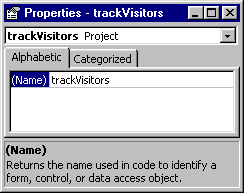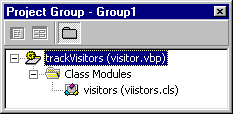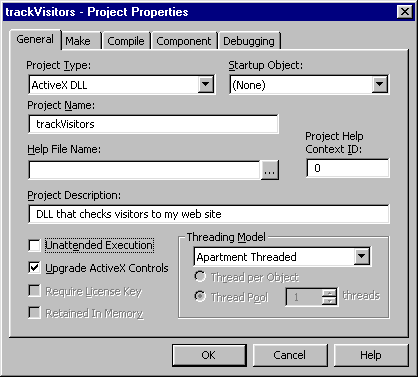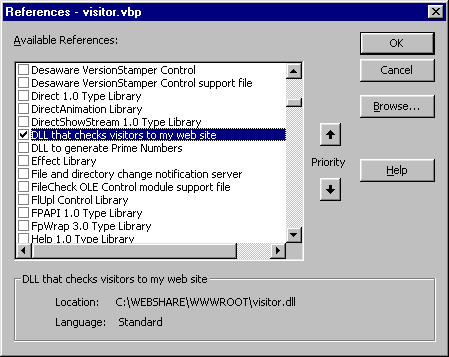
Well, there was not too much to that – but we need to store our
in usable format. Let's do that now..dll
1.
In VB, rename the project to
: trackVisitors

2. Now save the class module as
, and the project as visitors.cls
. When we compile the visitor.vbp
, it will ask us to compile .DLL
, which is the name of our project.visitor.dll
Your project explorer will now have the project and class module within the DLL named correctly:

3. Select Project-trackVisitors Properties… from the main VB menu. Be sure to add a Project Description so you can identify your DLL in the Project References dialog box:

Now we need to compile the
. Again, it's always a good idea to place a descriptive name in the Project Description. This will show up in our references later on..DLL
4. Select File-Make visitor.dll and press OK to compile. This process also registers your new
in the registry. Now if you want to use this in any other VB projects, it is there for you to select. However, now that it is registered, our VBScript files can find it when we create an instance of it: .DLL

Now we have got a DLL file and a new database, we can move on to our newUser form. You might remember that in our
, we check to see if there is a valid cookie. If now, we redirect the control to the form newUser.asp. This will actually display the form to the user asking for their name. Let's build this form now.visitors.asp